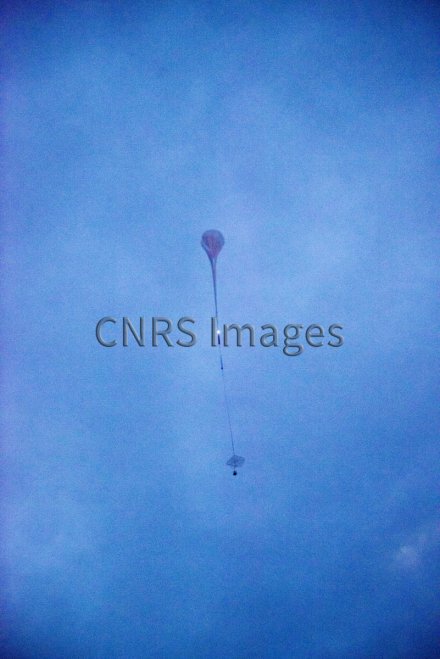Production year
2017

© Sébastien CHASTANET / CNES / OMP / IRAP / UT3 / CNRS Images
20170104_0210
The PILOT gondola ascends into the sky above the Alice Springs balloon launch base in Australia. Here we see the various components of the flight assembly, including the main balloon, a parachute, a radar reflector and the gondola. The flight, which lasted 33 hours and 40 minutes, took place on 16-17 April 2017. The gondola reached a maximum altitude of 40 km. The purpose of the PILOT mission is to measure submillimetric polarised emissions from interstellar dust, in order to gain insights into the origins of the universe. More specifically, the project aims to map the magnetic fields in the interstellar clouds of the Milky Way, and study their role in star formation Measurements are more economical and simpler to perform using balloons than using satellites. PILOT was able to gather data that would be impossible to collect using ground-based telescopes, as the Earth's atmosphere partially blocks cosmic radiation.
The use of media visible on the CNRS Images Platform can be granted on request. Any reproduction or representation is forbidden without prior authorization from CNRS Images (except for resources under Creative Commons license).
No modification of an image may be made without the prior consent of CNRS Images.
No use of an image for advertising purposes or distribution to a third party may be made without the prior agreement of CNRS Images.
For more information, please consult our general conditions
2017
Our work is guided by the way scientists question the world around them and we translate their research into images to help people to understand the world better and to awaken their curiosity and wonderment.